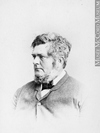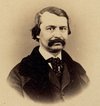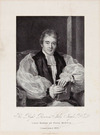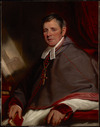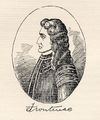ministers in the Church of Scotland from the Reformation (new ed., 9v., Edinburgh, 1915–61), III, 431–32. Our Scottish clergy; fifty-two sketches, biographical
. K. is a member will not tolerate such conduct, nor permit it to be tolerated by any of his respectable clergy.” He then denied that Kent had any such influence at his command, and concluded that he
] (London), 1748–49, 46. J. B. Bell, “Anglican clergy in colonial America ordained by bishops of London,” American Antiquarian Soc., Proc. (Worcester, Mass.), 83 (1973), 159. G.B., WO, Army
diocese from almost certain bankruptcy, the result of building the cathedral in an unfavourable economic climate and without the support of some clergy. Within a few years he put the accounts in order
, the government, the merchant faction, the clergy, and the nobility. A policy of conciliation towards the French Canadian ruling classes was indispensable. Moreover the clergy increasingly felt the need
Strachan* and a strong defender of the church’s claims to the clergy reserves alienated moderate opinion in Upper Canada. Dedicated to his church’s claims to sectarian educational rights and closely
career. On the last night of the session a bill was rushed through to sell the clergy reserves and to place the proceeds in the hands of the imperial government for it to apportion. Judging this action to
-Hélène (Sainte-Hélène-de-Bagot) he had come up against the influence of parish priest Louis-Misaël Archambault. Archambault figures in the “Cahier de notes (1852–1874)” that Dessaulles kept on the clergy
, confirm adherents, consecrate churches and cemeteries, ordain clergy, and keep an eye on missionaries and teachers. He was also appointed to the council in each jurisdiction and was assiduous about
organ of the diocese of Montreal. There is no doubt that at the time he was the instrument of the reform leaders, who used his good relations with the clergy to “convert” Bishop Ignace
Westminster Confession. Cock knew, as MacGregor did not, that the settlers’ alternatives to the ministrations of a few regularly ordained clergy lay in the occasional religious services provided by enthusiastic
clergy as civil magistrates, took steps to protect school and glebe lands from encroachment or alienation, and placed Bishop Charles
from clerical circles. After 1843, his supporters had begun to improve their relationships with the clergy, who had gradually come to look upon politicians more favourably. Just as the latter needed
theories which were eventually to give them power and control of patronage. The idea of ministerial responsibility supported this intention, to which the clergy and the old seigneurial families took
their attitude showed simply an acceptance of the inevitable or, more likely, it reflected the conviction of the Catholic clergy that only loyal submission would bring relief. Because of the penal laws
that church a share of the proceeds from the clergy reserves, hitherto reserved to the Church of England, and upheld the claims of the Sulpicians to compensation for lost seigneurial rights; indeed, he
clergy, and then be forced to leave his parish. Things did not, however, come to this pass.
In February 1830 the parish of Saint-Michel at Vaudreuil was
Simcoe were complicated by the controversy surrounding the Marriage Act of 1793, a measure which confined the solemnization of marriages to clergy of the Church of England and justices of the
protestations of certain members of the clergy: “I have not allowed anyone to give me as a reason that it is very hard to pray for one’s enemies. . . . They are our masters, and we owe them what we
was brought before the Conseil Souverain Perrot defended himself very ably. Meanwhile, in Montreal, a member of the clergy, the Abbé Fénelon [see





